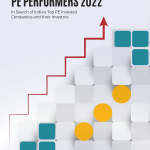
Practus’ assisted the healthcare service provider in reducing TAT for monthly MIS to investors from 15 days to 7 days and implementing system-driven processes to record, monitor, and minimize consumption of medicine stocks.
| Client Name | ROI | Industry | Ownership | Management | No. of Employees | Size | Project Duration |
| A Modern Healthcare Service Provider | 4.9x | Hospitals | VC Driven Company | Professionals | 200-250 | $25 million | 3 Months |
About The Company
NICU Hospitals is a Pioneer in offering modern Healthcare Services for Women and Children in India since 1985. Its facilities include – India’s largest level 3 NICU facility, dedicated Neonatal Ambulances, Private Suites, and Innovative health treatments.
Practus’ Role
- Month-end closing delays owing to a lack of interoperability between HIMS and the accounting package.
- No cash flow forecasting system in place.
- Data entry duplication between the HIMS and the accounting system.
- There aren’t enough analytics reports to analyze profitability.
- Delay in the completion of the yearly audit.
- Operational Issues with Stock Issuance and Consumption.
Impact Delivered
- The TAT for monthly MIS to investors has been reduced from 15 to 7 days.
- Automation of accounting entries from HIMS to the accounting package saves over 7 man-days each month.
- Through tight cash monitoring, zero variances have been achieved between the cash budget and actuals.
- Implemented system-driven methods to track, monitor, and reduce pharmaceutical stock consumption.
- Implemented a decision-making structure via the circulation of department profitability, doctor profitability, and a variety of other profitability cuts.
- Processes in the hospital have been redesigned to comply with the ICFR and IA standards.
- An Interim CFO and Technology lead have been appointed.
- A month-end checklist was implemented.
- For cash management, a budgeting and forecasting system were implemented.
- Collaboration with an IT partner led to the formation of a link between the HIMS and the accounting system.
- To aid decision-making, all MIS reports were reviewed, and several analytical reports were implemented.
- Set up a system-driven approach to track and control stock usage.



